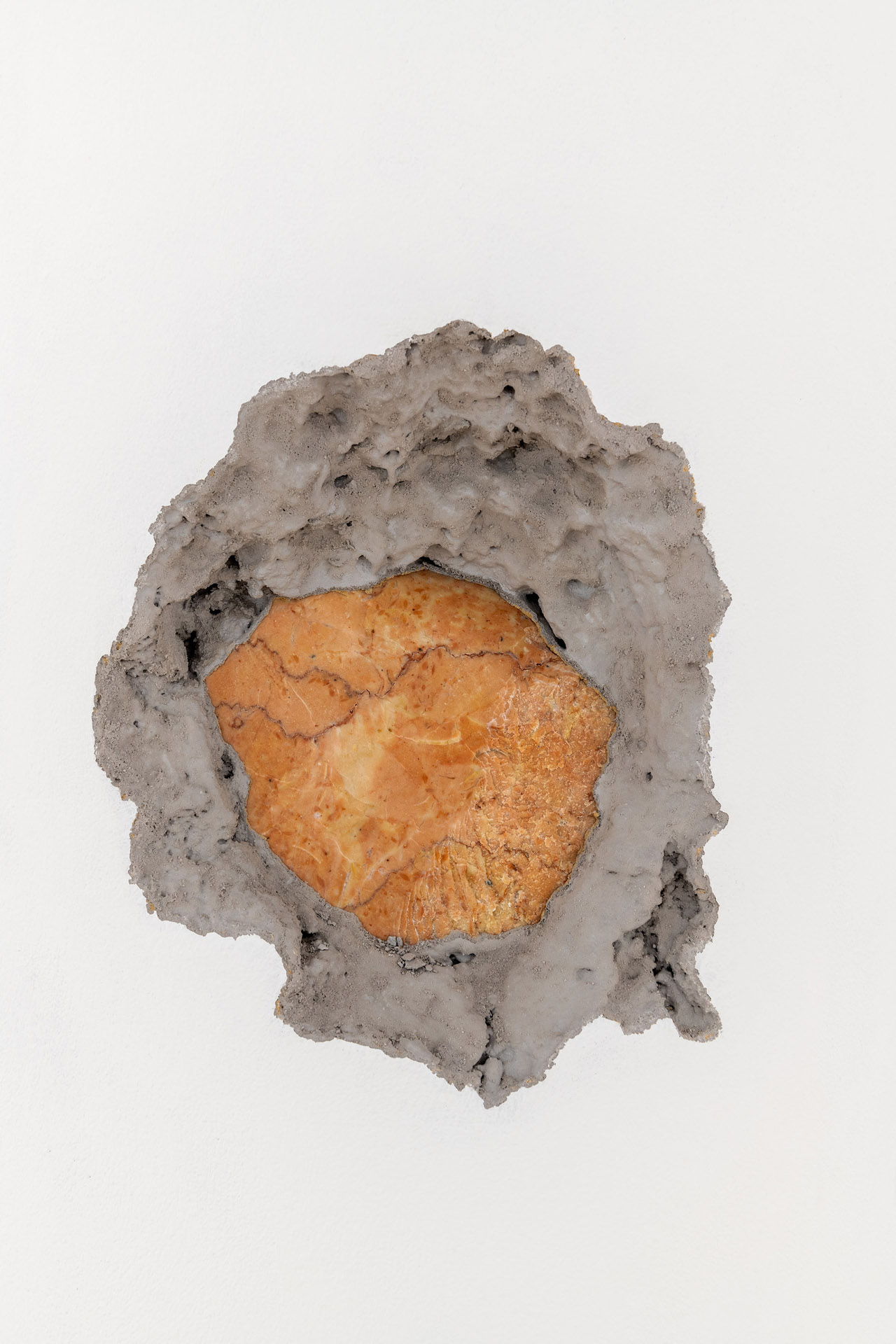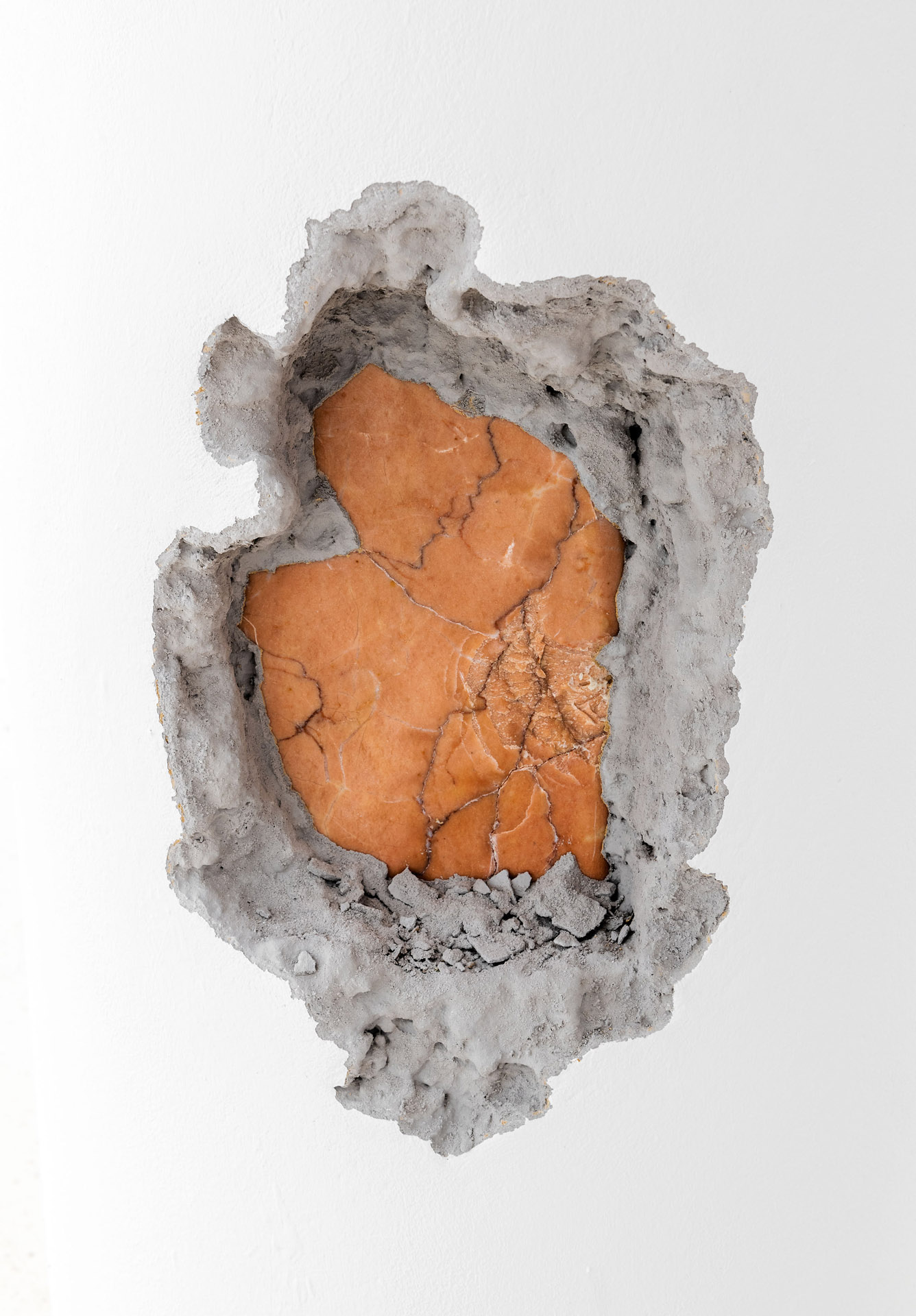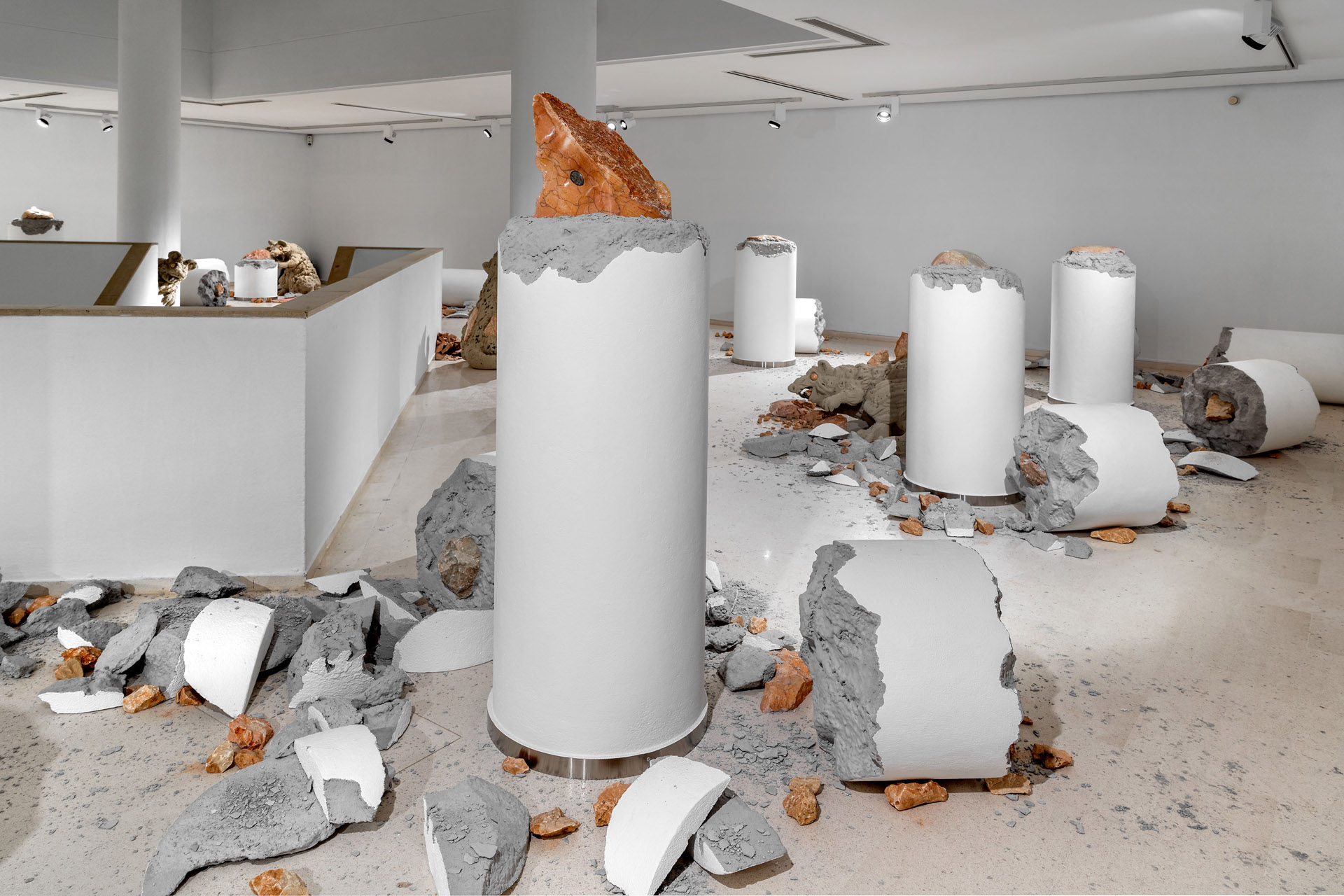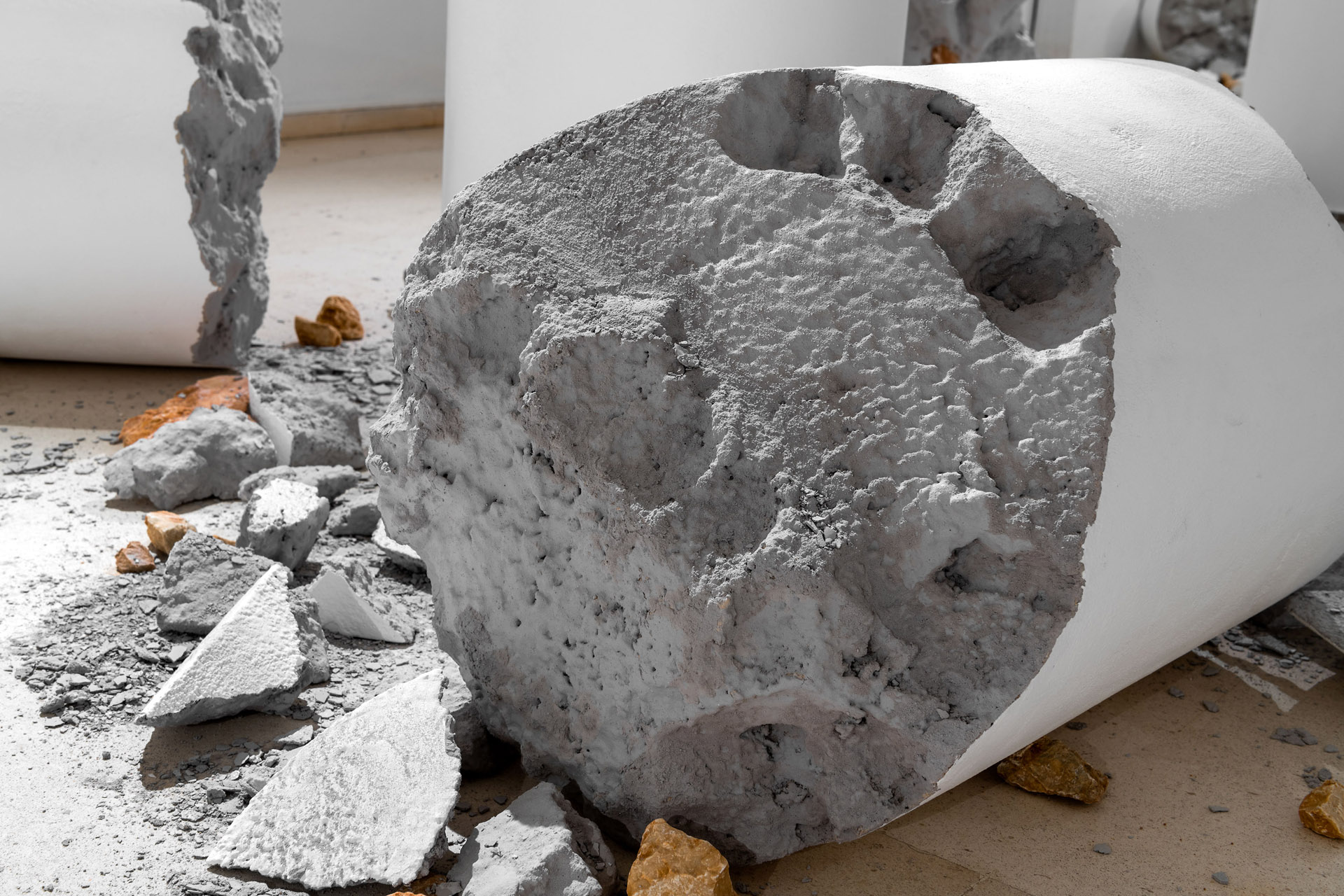Artist: Guillermo Ros
Exhibition title: An Exercise in Violence
Curated by: Nuria Enguita
Venue: IVAM, Valencia, Spain
Date: October 7, 2021 – February 6, 2022
Photography: all images copyright and courtesy of the artist and IVAM, Valencia
Note: Exhibition texts are available here
The installation Guillermo Ros (Vinalesa, 1988) is presenting in IVAM’s Gallery 6 simulates two frozen instants, with a different ambience on each of the gallery’s two levels, in which a fight reminiscent of a video game takes place. An Exercise in Violence lays bare the violence the artist exposes himself to during the artistic process involved in the very act of exhibiting, which Ros renders here as a combat with the institution, with the architecture of the institution.
The lower level is populated with a forest of columns calling to mind a hypostyle hall. The scene of a battle in the vein of Berserk, the legendary manga by Kentaro Miura, a go-to reference for Ros, in which the protagonist is challenged to a duel in a room with columns which prevent him from brandishing his sword properly. It is ultimately a fight against the elements in the hall which hamper the work of the exhibition: the hall’s original columns are camouflaged among those newly produced by Ros, which can be identified solely by the rodent bitemarks and bits of embedded polished and natural stone. At the same time, the stone also speaks to one of the materials to be found in the Llotja de la Seda in Valencia and in many other emblematic buildings from Valencia’s Golden Age.
The mystery is disclosed on the upper level, an aftermath of defeat and destruction infested by rats among broken columns and stone—ruins in which we can find bits of Damascus steel. These figures in a way transport us once again to the Llotja de la Seda and its many gargoyles, sculptures and reliefs which symbolize lust, perversity and macabre scenes alluding to a diabolical underworld.
On this occasion, the sculptures take the form of rodents: rats ready to lay waste to the museum and its architecture, gnawing away at everything with their teeth of Damascus steel, reminding us of the bits embedded in the stones. And yet, parts of their bodies are in the process of being parasitized by the institution, of blending in with the museum, with the limestone to be found below in the hypostyle hall.
Like the rats, the artist, self-exploited and with no disguise, faces the challenge of the context in which he is to exhibit and the material with which he has to work, in an exercise in violence against the architecture of the museum to which the creator — the artwork—will ultimately succumb.
All these elements make up a stage setting for Ros’s imaginary, his way of viewing and understanding the art world, and his personal analysis of the context in which he lives and works. Ros focuses his more recent work on the violence inherent in the process of creation and here he presents his idea of the artist as a violated being, absorbed by the work in detriment of his own physical and mental condition.
In short, it is an exercise in analogies, imaginaries and violence that add up towards a production of epic proportions. The various layers and readings of each one of the elements can be summed up in the concept of ‘lore’, as used in videogames to refer to the backstory of the narrative and characters, which Ros applies to the field of art: the lore of the elements of the exhibition, of the museum’s architecture, and his own, presenting a perfect mix of the references that shape his personal conceptual vision.




































































































